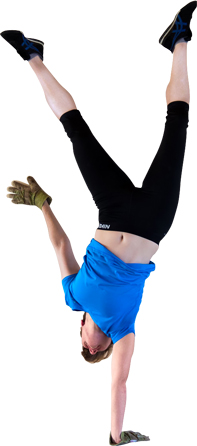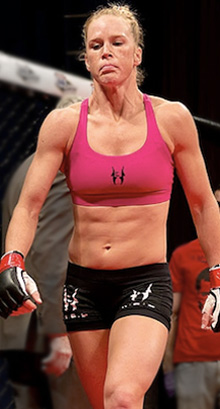
What follows are my observations from nearly a decade of hard fight training in Core JKD as a female.
Now, the bad-ass part of me wants this guide to be essentially gender neutral. That bad-ass would pretend women are just smaller versions of men, and I would address issues of fighting and technique.
But let’s face it; we are not the same.
We live in a society with different expectations for female bodies—especially when it comes to appearance.
These are my experiences with cauliflower ear, broken teeth, clothing that hindered training, insecurities regarding my body, and false perceptions about what I do and why I do it.
I want to help you avoid some of that pain, worry, and misunderstanding.

I have lost count of the number of times I’ve been asked by men how my husband feels about my training for fighting (implying my body would become unattractive if I kept this up). I’ve gone to work with a black eye, and my co-workers were horrified. They were more traumatized by it than I was. Here are a few body issues that you may encounter when training for fighting.
The Myth of Bulky Muscle
I used to worry about this. There seem to be a lot of misconceptions about what happens to a woman’s body when she starts a male-dominated athletic activity.
There’s this thought that her body will only form one way—into a mini-man body. But remember what I said above? Women’s bodies are NOT men’s bodies. Ours adapt differently to physical stress, in a myriad of—quite frankly—beautiful ways.
If you’re training for fighting, your body will shape itself to adapt to that stress.
You won’t become like this woman because she doesn’t train for fighting. If you want to look like her, go lift some heavy weights and closely monitor your diet.

(Src: Dr. Stacey Naito's Blog)

(Src: USA Today)
Or these women, because they don't train for fighting, either.
Every sport creates certain body traits. If you train properly for fighting, you might start looking like these women:
They train for function in fighting. I think they’re gorgeous.
Even then, unless you are training professionally, you’ll probably look more like me, a woman who trains several days a week and watches her diet (that’s me at the top of the article).
I feel stronger and most capable when I’m training, and I love that feeling. I like being able to help move furniture or not need to ask for help carrying a large box out of a store.
Plus, there’s nothing like fight training to build a firm butt and thighs either.


Holly Holm
(Src: UFC)
How to Minimize Bruising
I spent years going to work in long sleeves in the dead of Florida summer to cover my training bruises. I worried what my husband would think or that people would think he was abusing me. I know intimately the color stages of a bruise and have yearned for that purple spot to turn brown, because I knew that would be the last stage before it disappeared.
After a lot of trial and error, and creams and rubs (all of which have ended up in the trash), I’ve found a a few things that really work for me. I very rarely get bruised now, unless it’s from a major hit. If I do get one now, I just wear it with pride. It means I spent my time bettering my craft.
1. Up your Vitamin C - I take 1,000 mg of Vitamin C before and after training sessions, and at meals the day after training. I notice, now, that if I forget to take my Vitamin C, I get bruised.
2. Cut or reduce your sugar consumption. I’ve been on a sugar-free diet for a year and a half now. One of the many health benefits I’ve seen has been less bruising and faster healing wounds.
3. Get proper rest - A tired body is a body prone to injury. Get proper sleep the night before (and after) you train to reduce the chance you will bruise.
4. Ice and movement - If you get a bruise, there is no magic bullet to make it disappear, but you can speed the process of healing along. Ice the area as soon as possible. This will constrict the blood vessels and reduce swelling, which will keep the bruise from growing larger. Then, in the next few days, get blood flowing to that area so the old blood gets cleared. Go for a walk or run. I’ve even had bruises disappear through a hard training session.
Fight Training and Your Cycle
Something nobody wants to talk about—the female reproductive cycle. Three issues here:
1. Menstruation I feel like I shouldn’t even have to address this, but I’ve witnessed people using their period as an excuse not to train—so here we are. I treat fighting while menstruating like I treat fighting with hair in my face: learn to focus on the fight through the inconvenience, and you’ll become a better fighter. This has the added benefit of helping you learn to work through other types of pain you may encounter during a fight. In a street fight, you won’t be able to say: “Hey, can we stop this and do it later please? I’m on my period, thanks.” Cramps suck, I know. I’ve had want-to-curl-into-a-ball-and-disappear cramps. Sometimes the activity of training can lessen them. 2. Ovulation Another part of the monthly cycle that I’ve noticed causes problems is ovulation. It’s subtle, but once I noticed it, it was hard to ignore. During ovulation, I tend to be more pain sensitive and injury prone. If you’re a doctor reading this, please let me know why that is. 3. Delay of Period From Hard Training It’s not common, but it can happen. Twice I have started a really hard training schedule, thinking I could push my body, and my period was delayed. Both times had me running to the pharmacy in a frenzy to buy a pregnancy test which came back negative. I like to err on the side of caution, and I take a delayed period as a sign I need to back off a bit and give my body more rest. You will have to determine what you think is best for your body.
How to Avoid Chipped Teeth and Cauliflower Ear
Training hard means you will inevitably get hit in the mouth or the ears.
People who don’t wear protective gear can damage themselves permanently.
Get a mouth guard and wear it to prevent chipped teeth. Plain and simple. The feeling of my tooth crumbling in my mouth still gives me nightmares.
If you grind your ears against enough heads and shoulders in clinch-range and grappling, you may end up dealing with cauliflower ear. Here are symptoms that may eventually lead to cauliflower ear if not addressed:
1. Tender/painful ear cartilage
2. Obvious swelling of the ear
3. Red or purple discoloration
I put my ear guards on at the first sign of a tender ear. This helps the ear heal quickly.
Ear guards may not be the prettiest things on earth, but they are better than going through the process of getting your ear drained and sewn together to prevent cauliflower ear.
Imagine how it would feel running your ear through a sewing machine.
That’s the pleasure I experienced because I didn’t wear protective gear.
A doctor had to run a needle and thread through the back of my ear, out the front, and back down again, repeatedly, to bind the cartilage.
What IS Cauliflower Ear Anyway?
Cauliflower ear happens when the cartilage of the ear is damaged and the area starts filing with fluid (a hematoma of the ear forms).
As more fluid accumulates, the cartilage separates from the skin and deforms. This deformation can block blood flow, and the area hardens into a permanent cauliflower ear.
Some people like keeping cauliflower ears as badges of honor. I think it’s kind of silly and ego-driven to keep a cauliflower ear on purpose. You wouldn’t leave your arm broken just to show you were tough or that you train martial arts would you? Why wouldn’t you repair your damaged ear if you had the ability to fix it?



